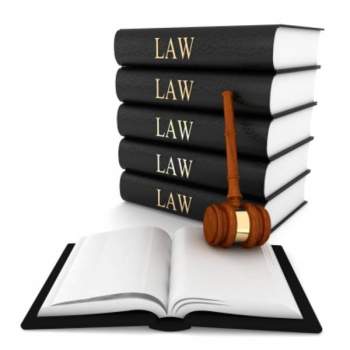
James Wilson

Popular In Supreme Court
How Many Supreme Court Justices Are There Justice Clarence Thomas Landmark Supreme Court Cases Supreme Court Building Us Supreme Court Docket Chief Justice John Roberts Hugo Black Justice Antonin Scalia Roger B Taney Justice Sonia Sotomayor Supreme Court Justices Supreme Court Judgments
Supreme Court Justice: James Wilson
James Wilson was one of the original six justices appointed to the Supreme Court by George Washington. He was also one of the United States’ Founding Fathers, member of the Continental Congress, and a signer of the Declaration of Independence. James Wilson was born on September 14, 1742 in Scotland and attended many Scottish universities without ever getting a degree. Wilson later moved to Philadelphia, Pennsylvania in 1766 and began teaching at The Academy and College of Philadelphia. He soon began reading law at John Dickinson’s and attained the bar two years later.
James Wilson was nominated on September 24, 1789 for the role of an Associate Justice of the Supreme Court by George Washington, after the court began the 1789 Judiciary Act. Wilson was then was confirmed by the Senate on September 26, 1789, and received his commission three days later. Wilson only heard nine cases between his appointment in 1789 and his death nine years later.
As one of the first American legal philosophers, James Wilson thought through in great detail some of the thinking recommended in the decisions issuing around that time in the Supreme Court. Wilson felt particularly compelled to spend time arguing out the reasons and justification behind the decisions made in the court.
Famous Cases
Hayburn's Case (1792): A Supreme Court case where the court was invited to make a decision on whether Congress could assign certain non-judicial duties to the federal circuit courts which were in their official capacity. This case was the first time the Supreme Court looked at the issue of justifiability. Eventually, Congress reassigned the duties in question, and the Court did not have to give judgment in this case. At the time of the case, each of the Supreme Court Justices also served on a Circuit Court. Due to the fact, five of the six Justices including James Wilson declared it to be unconstitutional as judges in the District Courts.
Chisholm v. Georgia (1793): A Supreme Court case that was considered the first Supreme Court case of impact and significance. Because of the date, there is very little legal precedent available. The case was superseded almost immediately by the Eleventh Amendment. In South Carolina in 1792, Alexander Chisholm, who was the executor of the Robert Farquhar’s estate, tried to sue Georgia State in the Supreme Court regarding payments for goods that were owned by Farquhar from the American Revolutionary War. General Edmund Randolph, the U.S. Attorney, argued on behalf of the plaintiff. Meanwhile, Georgia refused to appear as the defendant, claiming that it could not be sued as a sovereign state without granting consent to the suit.
The Court, including Justice James Wilson, decided in a 4 to 1 vote in favor of the plaintiff. The justices argued that Article III, Section II, of the Constitution rescinded the sovereign immunity of the states and gave federal courts the power to hear disputes between States and private citizens. Because of the case, the Eleventh Amendment of the Constitution was ratified in 1795. Doing so removed federal jurisdiction in situations where citizens of a specific state tried to sue another state. However, a citizen of one state still had the power to sue the Federal courts if the state consented to the suit or if Congress abrogated the immunity of the state under the Fourteenth Amendment.
Georgia v. Brailsford (1794): A Supreme Court case where the judge presiding over the Court instructed the jury that they had the right to judge not only the law, but also the facts. This case is often thought of as the precedent of jury nullification. The Chief Justice explained the opinion, which was supported by James Wilson, which explicitly acknowledged jury nullification by saying that juries were the best judges of facts while courts were the best judges of law, but it still allowed juries to look at both parts to make a decision.
Hylton v. United States (1796): A U.S. Supreme Court case where the Court stated that a tax placed on carriages did not violate Article I, Section 9’s rule for the apportioning of direct taxes. The decision stated that the carriage tax was actually an excise tax instead of a direct tax, which required apportionment by population among the states. The Supreme Court also noted that a tax placed on land was a type of direct tax contemplated by the U.S. Constitution.
The case was significant because it was the first case heard Supreme Court that challenged the constitutionality of an act performed by of Congress. By holding up the tax, the Court exercised its power of judicial review, although the court refrained from overturning the statute. Rather than issuing a single opinion, the Justices issued their own analysis, but all of them including that of James Wilson still held the same position.
Calder v. Bull (1798): A Supreme Court case where the Court examined whether the court had the authority to review legislative decisions made by the state. The legislature of Connecticut demanded a new trial in a court regarding the contents of a will, which overruled the previous court ruling. In a unanimous decision by the Supreme Court which included James Wilson, the Supreme Court held that the Connecticut legislature's actions were not in violation of the ex post facto law found in Constitution under Article I Section 10. This holding is still valid today and states that the ex post facto provision found in the Constitution applies only to criminal cases and not civil cases.
New York v. Connecticut (1799): A case heard by the Supreme Court that involved the State of New York and the State of Connecticut which came out of a land dispute between two private parties. This case with the first where the Supreme Court exercised its power of original jurisdiction under Article III of the Constitution in order to hear the controversy between the two states. The land dispute involved a strip of land on the western border of New York bordering Pennsylvania which Connecticut claimed jurisdiction over and in turn granted the land to two private parties.
After New York granted certain parcels within the region to other private parties, the successors in title filed an action. The Court denied a motion to remove the suit from the Circuit Court, and New York then filed a bill in equity against the State of Connecticut. However, since the bill in equity was filed when the General Assembly of Connecticut was out of session, the state did not participate in the case. However, the claimants’ attorneys argued that no reasonable notice was given for the injunction to be allowed and that New York did not have an interest in the proceedings that deserved a stay. Justice James Wilson and the majority opinion of the Supreme Court found the notice to be sufficient, but denied the injunction, since New York lacked standing.
NEXT: A Short Biography on Justice John Jay




















